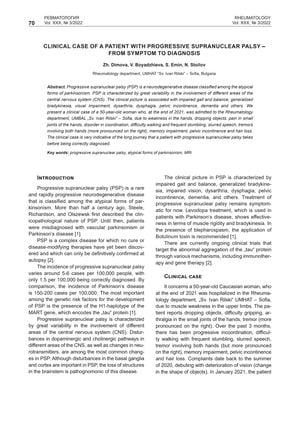Clinical Case of a Patient with Progressive Supranuclear Palsy – From Symptom to Diagnosis
October 2022
in “
Rheumatology (Bulgaria)
”

TLDR Accurate diagnosis of progressive supranuclear palsy requires thorough neurological assessments and MRI.
This clinical case study describes the diagnostic process for a 50-year-old woman with progressive supranuclear palsy (PSP), a rare neurodegenerative disease often confused with Parkinson's disease and multiple sclerosis due to overlapping symptoms such as muscle weakness, tremors, coordination issues, memory impairment, and hair loss. Initial misdiagnoses led to ineffective treatments until MRI findings, specifically the "Hummingbird sign" and "Mickey Mouse sign," confirmed PSP. The case emphasizes the need for thorough neurological assessments and MRI to accurately diagnose PSP, highlighting the disease's complexity and the common delays in diagnosis.

